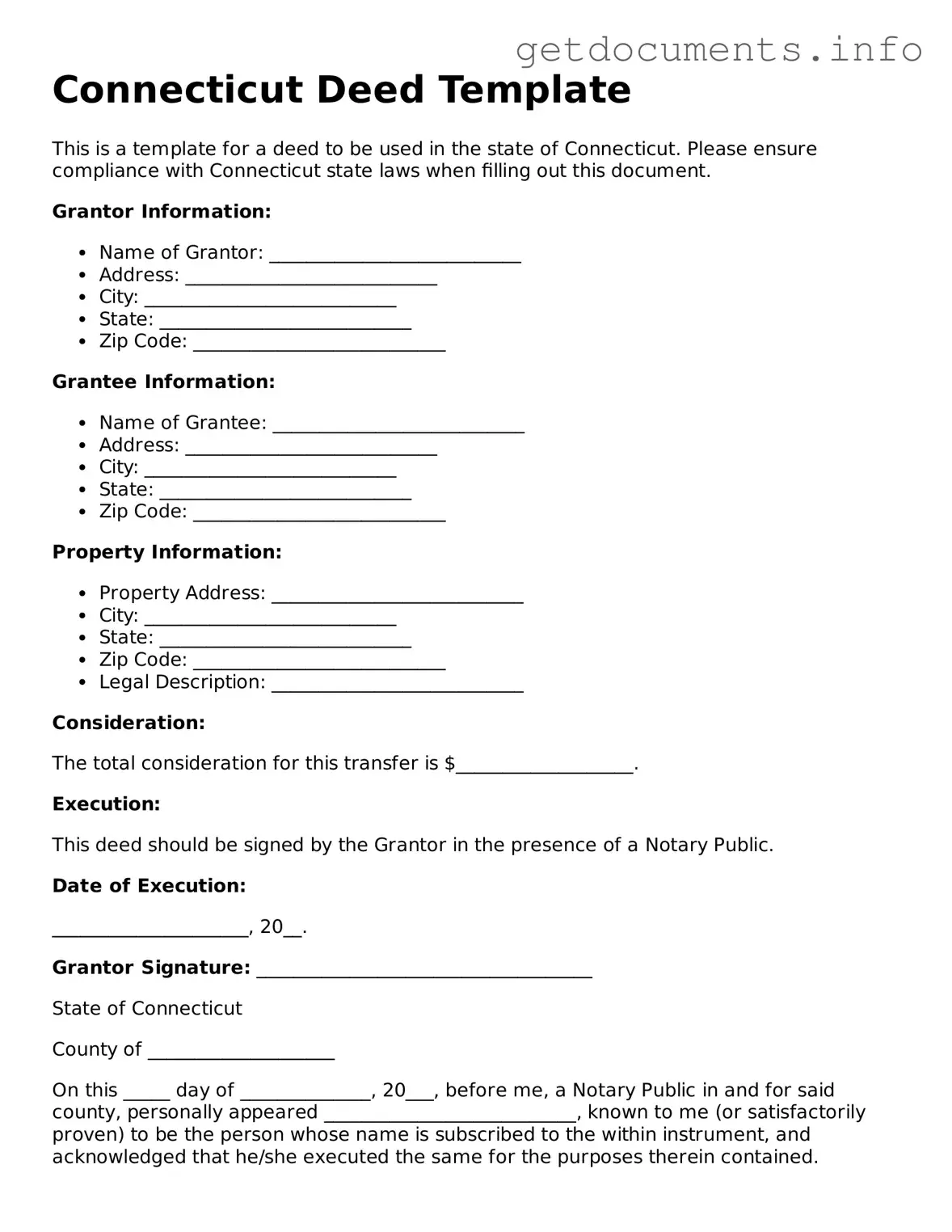The Connecticut Deed form plays a crucial role in real estate transactions within the state, serving as a legal instrument that facilitates the transfer of property ownership from one party to another. This document encompasses various essential elements, including the names of the grantor (the person transferring the property) and the grantee (the person receiving the property), along with a detailed description of the property being conveyed. Additionally, the form typically includes the consideration, which refers to the amount of money or value exchanged for the property, as well as any relevant covenants or warranties that may protect the interests of the grantee. The execution of the deed must be performed in accordance with state laws, often requiring notarization to ensure its validity. Furthermore, the Connecticut Deed form may vary depending on the type of deed being used, such as a warranty deed, quitclaim deed, or special warranty deed, each serving different purposes and offering varying levels of protection. Understanding these aspects is vital for both buyers and sellers to navigate the complexities of property transactions effectively.
